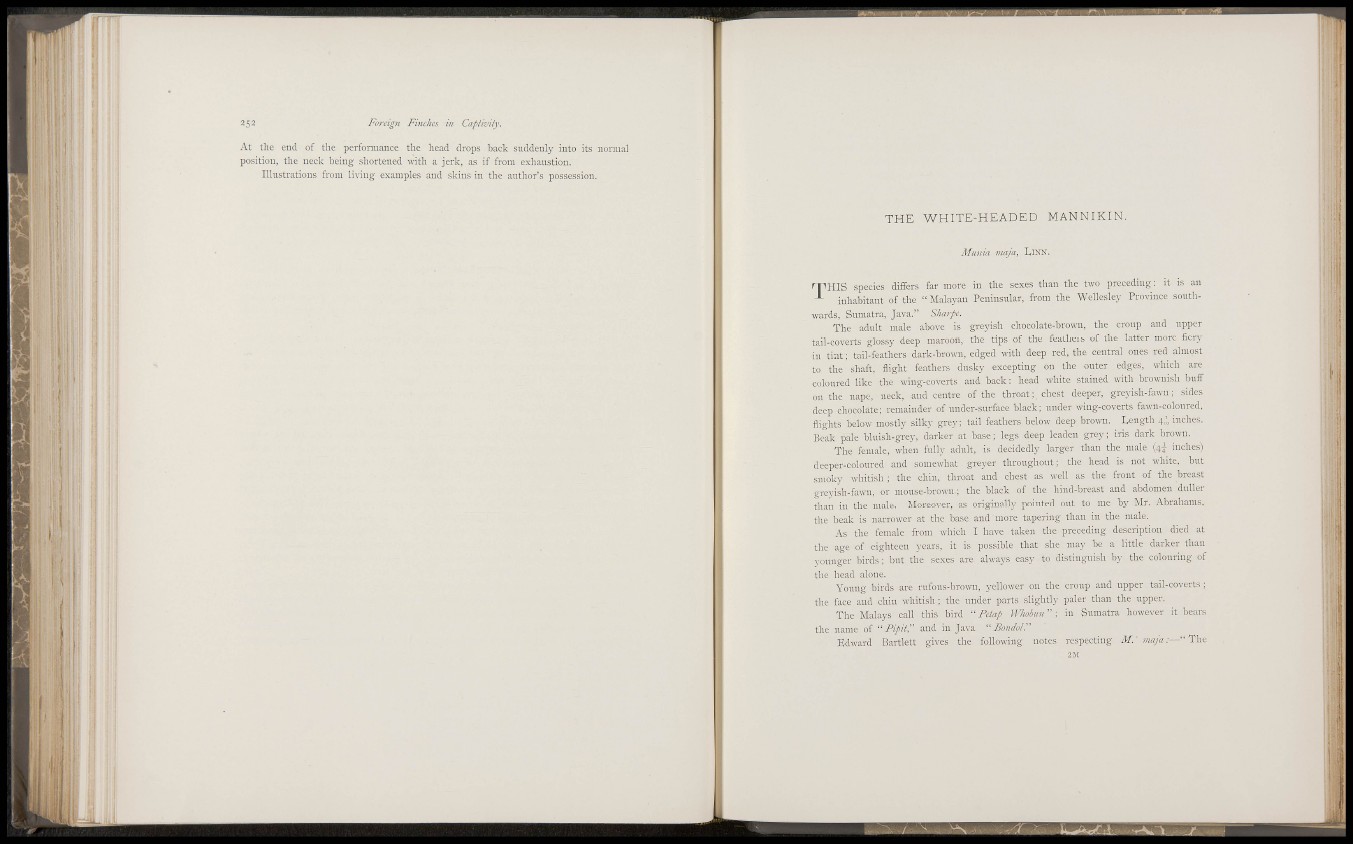
252 Foreign Finches in Captivity.
At tlie end of tlie performance the head drops back suddenly into its normal
position, the neck being shortened with a jerk, as if from exhaustion.
Illustrations from living examples and skins in the author's possession.
' I
%
i;
• l i ;
T H E WHITE-HEADED MANNIKIN.
Munia mnja. LINN.
r r ^ H I S species differs far more in the sexes than the two preceding: it is an
inhabitant of the " Malayan Peninsular, from the Wellesley Province southwards,
Sumatra, Java." Sliarpc.
The adult male above is greyish chocolate-brown, the croup and upper
tail-coverts glossy deep maroon, the tips of the feathers of the latter more fierjin
tint; tail-feathers dark-brown, edged with deep red, the central ones red almost
to the shaft, ilight feathers dusky excepting on the outer edges, which are
coloured like the wing-coverts and back: head white stained with brownish buff
on the nape, neck, and centre of the throat; chest deeper, greyish-fa\\'n; sides
deep chocolate; remainder of under-surface black; under wing-coverts fawn-coloured,
flights belo«' mostly silky grey; tail feathers below deep brown. Length inches.
Beak pale bluish-grey, darker at base; legs deep leaden grey; iris dark brown.
The female, when full}- adult, is decidedly larger than the male (4^ inches)
deeper-coloured and somewhat greyer throughout; the head is not white, but
smoky whitish ; the chin, throat and chest as well as the front of the breast
greyish-fawn, or mouse-bro^\-n,; the black of the hind-breast and abdomen duller
than in the male. Moreo\'er, as originally pointed out to me by Mr. Abrahams,
tlie beak is narrower at the base and more tapering than in the male.
As the female from ^\-hich I have taken the preceding description died at
the age of eighteen 5-ears, it is possible that she may be a little darker than
younger birds ; but the sexes are always easy to distinguish by the colouring of
the head alone.
Young birds are rufous-brown, yellower on the croup and upper tail-coverts ;
the face and chin whitish ; the under parts slightly paler than the upper.
The Malays call this bird ''Petap Whobuir'\ in Sumatra however it bears
the name of "Pipit," and in Java " BondoU'
Edward Bartlett gives the following notes respecting M.' viaja:—"'X\\c
2JI